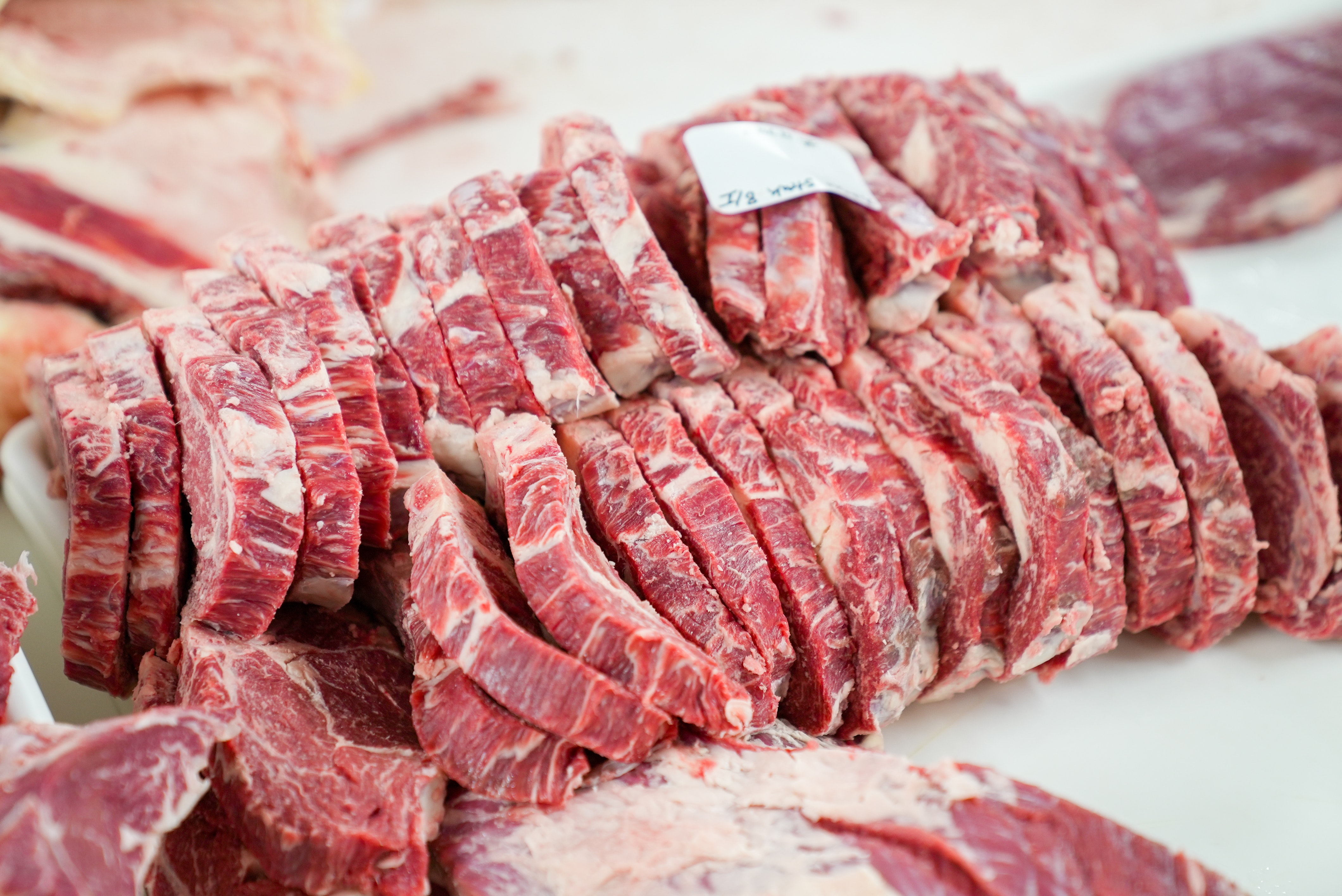Grain-Fed vs Grass-Fed Beef- What’s the Difference? (original) (raw)
en Español / em Português
Español
El inglés es el idioma de control de esta página. En la medida en que haya algún conflicto entre la traducción al inglés y la traducción, el inglés prevalece.
Al hacer clic en el enlace de traducción se activa un servicio de traducción gratuito para convertir la página al español. Al igual que con cualquier traducción por Internet, la conversión no es sensible al contexto y puede que no traduzca el texto en su significado original. NC State Extension no garantiza la exactitud del texto traducido. Por favor, tenga en cuenta que algunas aplicaciones y/o servicios pueden no funcionar como se espera cuando se traducen.
Português
Inglês é o idioma de controle desta página. Na medida que haja algum conflito entre o texto original em Inglês e a tradução, o Inglês prevalece.
Ao clicar no link de tradução, um serviço gratuito de tradução será ativado para converter a página para o Português. Como em qualquer tradução pela internet, a conversão não é sensivel ao contexto e pode não ocorrer a tradução para o significado orginal. O serviço de Extensão da Carolina do Norte (NC State Extension) não garante a exatidão do texto traduzido. Por favor, observe que algumas funções ou serviços podem não funcionar como esperado após a tradução.
English
English is the controlling language of this page. To the extent there is any conflict between the English text and the translation, English controls.
Clicking on the translation link activates a free translation service to convert the page to Spanish. As with any Internet translation, the conversion is not context-sensitive and may not translate the text to its original meaning. NC State Extension does not guarantee the accuracy of the translated text. Please note that some applications and/or services may not function as expected when translated.
Estoy de Acuerdo / Eu concordo / I agree
Collapse ▲
When choosing meat for your summer cookout, the various labels on the packaging can seem a little overwhelming. One of the label claims that people often see is grass-fed beef. At first glance, this seems like a straightforward claim.
But what does it really mean?
Cattle are ruminants which means their diet must contain forages, like grass and hay. They graze plant material that humans cannot eat. Most cows start their lives the same way. Calves are born on pasture and stay on pasture until it is time to be weaned from their mother. In the traditional model, cattle are then finished by feeding supplemental grains, like corn, soybeans, and wheat to increase the amount of energy they are getting. Grain is fed because it has higher energy levels, which speeds up the process and increases efficiency. Once they reach the desired weight, they are processed and the meat is sent to the grocery store, restaurant, or consumer.

The grass-fed claim means that these animals had access to pasture their entire lives and were not fed grains. There is also a grass-finished claim, which means the animal may have been fed grains at some point in its life, and should have the percentage of grain to grass-fed somewhere on the label. These are both considered unverified claims, which means no third party has come out to inspect and certify the practice.
Because grass-fed beef is eating a diet lower in calories and energy, it takes longer to get to the proper weight and finish, which is the amount of fat an animal has. It also takes more space to provide enough forage for these animals. This extra time on the farm is why grass-fed beef often has a price premium.
These different practices do influence the final product. Due to their diet, grain-fed beef tends to have whiter colored fat and typically has more marbling. The marbling is responsible for a lot of the flavor and tenderness of beef and is used when grading quality. Grass-fed beef typically has a more yellow-colored fat and is leaner with less overall marbling and fat. Many people have a personal preference for the flavor of either grain or grass-fed beef. Give both a try and see which you prefer!
In addition to appearance and flavor, there are some nutritional differences between the two types of beef. Grass-fed beef tends to be lower in calories since it has less fat. It has also been shown to have higher levels of Omega 3 fatty acids compared to grain-fed beef which has many health benefits.
Choosing either grain or grass-fed beef comes down to personal preference for taste and ideals. Regardless of your choice in grain or grass fed, beef is a healthy and safe component of any diet. Beef is high in protein as well as vitamins and minerals such as iron, zinc, and B12. Union County has many options for people looking to purchase meat from a local farmer. Visiting the Farmers Markets allows consumers to meet the farmer and ask questions about how the animals were raised. Other resources include the Visit NC Farms App and the Union County Local Foods website. Both of these can be found on the N.C. Cooperative Extension of Union County website under The Local Foods tab. Be sure to enjoy plenty of fresh and delicious meats as part of your summer celebrations.